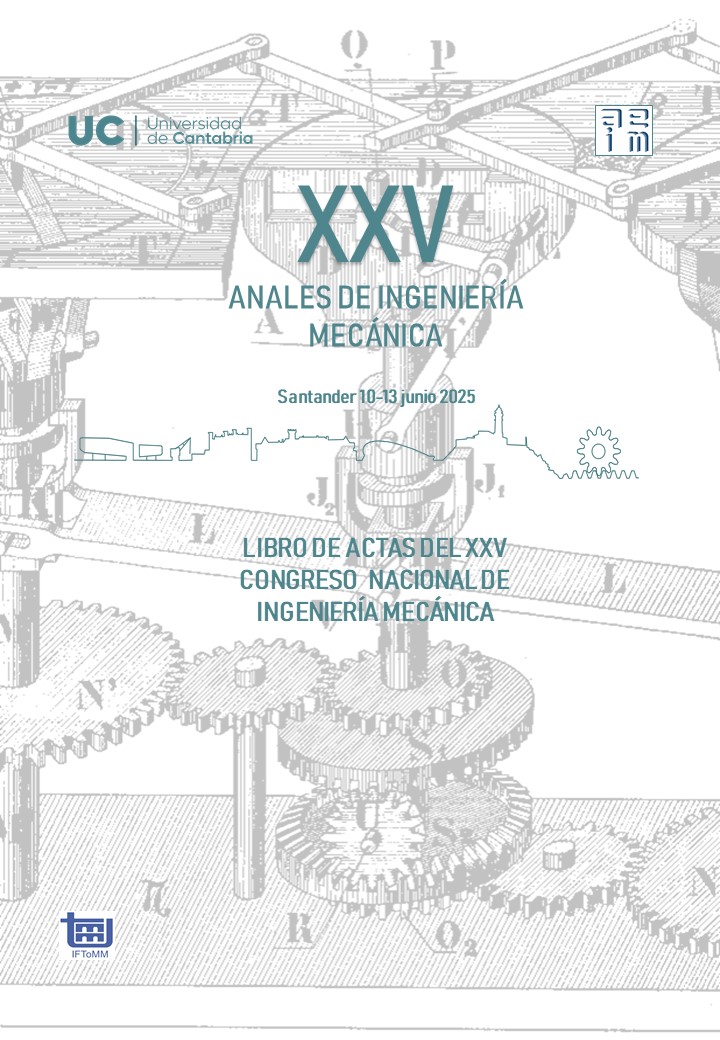Research activities of LARM2 at the University of Rome Tor Vergata
Contenido principal del artículo
Resumen
In this paper, the activities of the Laboratory of Robot Mechatronics (LARM2) at the University of Rome Tor Vergata are reported. LARM2 has been established in 2019 at the University of Rome Tor Vergata to renew a lab with 3 decades of activity originally based at the University of Cassino, under the leadership of Prof. Marco Ceccarelli and together with Dr Matteo Russo. The structure and activities of LARM2 can be rather considered as distributed in several international locations, both in Italy and abroad, with many collaborations in joint research project, research visits, supervision of international students, dual doctoral programs, and joint research articles. The headquarters of LARM2 are at the Department of Industrial Engineering, University of Rome Tor Vergata, while its international sections are represented by the laboratories and team units both with and without official agreements for joint frames. LARM2 activities are mainly focused on education and research in topics related to Robotics and Mechatronics from a mechanical engineering viewpoint, referring to theory, design, practice and technological transfer. In particular, the activities are directed and available for collaborations with the purpose of investigating, designing, planning, and improving mechanical and mechatronic systems, with both traditional and innovative designs. The development of BSc, MSc and PhD theses on subjects and prototypes for innovation is oriented to form engineers who will be capable to solve new problems but still with interest in the traditional techniques of Mechanical Engineering. LARM2 activity is also available and carried out for applied research through formal and informal research agreements with enterprises, with the aim both to apply research results and to solve problems in engineering practice in industrial and non-industrial applications. In particular, LARM2 research focuses on new designs for service robots and machinery, the analysis of problem solutions in robot-assisted manufacturing processes and in robotized manipulations, and the functionality enhancement of existing mechanical systems. LARM2 is available for joint projects within local, national, and international frames, particularly in the European framework. LARM2 invites scholars and students for periods of study and collaborations in the subjects of common interest with academic and non-academic institutions. Activity can be carried out within Erasmus program and within, but not only, signed international agreements for bilateral projects even with extra-European universities. Theses for Bachelor, Master and PhD students are developed within LARM2 activities, both in their own projects and in co-tutorship with other institutions. PhD candidates are welcomed also for double degree PhD programs in collaboration with other Universities. Current activities at LARM2 focus on applied robotics issues to develop service robots, especially in healthcare. In particular, specific attention is paid to the development of systems for the motion assistance of limbs with the peculiar vision referring to the assistance of elderly people. Furthermore, research and design activity continues with the LARMbot humanoid robot, used both as research and experimental platform in the design of robotic parts and aimed at the development of a low-cost humanoid robot with high mechanical performance. This paper presents LARM2 to reenergize past collaborations with Spanish colleagues but also to activate new ones with renewed interest and collaboration on topics that can be useful not only in the research field but also for training new generations of engineers with an international vision that is not just pro-European.
Detalles del artículo

Esta obra está bajo una licencia internacional Creative Commons Atribución-NoComercial-CompartirIgual 4.0.
CC BY-NC-SA 4.0)
El lector puede compartir, copiar y redistribuir el material en cualquier medio o formato, siempre y cuando cumpla con las siguientes condiciones:
-
Atribución (BY): Debe dar crédito adecuado al autor original, proporcionando un enlace a la licencia y señalando si se han realizado cambios.
-
No Comercial (NC): No puede utilizar el material con fines comerciales. Esto significa que no puede venderlo ni obtener ganancias directas de su uso.
-
Compartir Igual (SA): Si adapta, transforma o construye sobre el material, debe distribuir sus contribuciones bajo la misma licencia que el original.
Recuerda que esta licencia no afecta los derechos legales del autor, como el derecho moral o las excepciones de uso justo.

